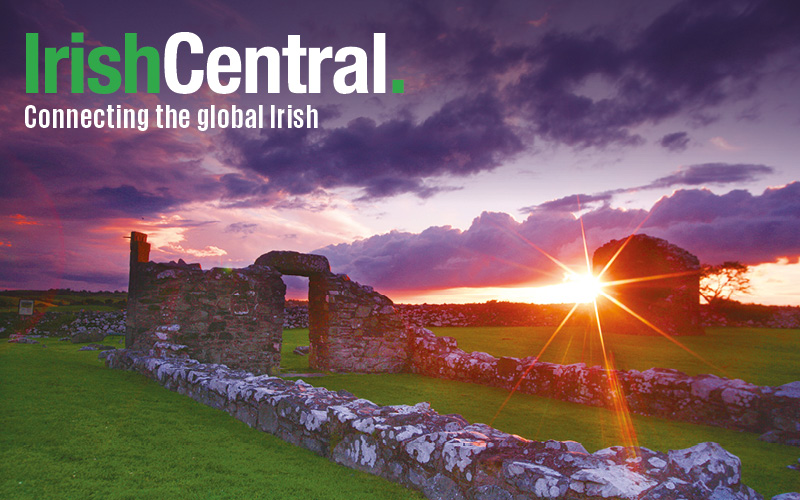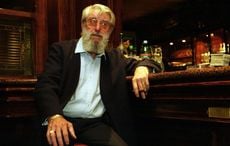| President Bill and First Lady Hillary Clinton arrive in Belfast in 1995. |
It vividly remember when I stood among the 200,000 people crammed into the center of Belfast waiting for President Bill Clinton to appear for the city’s Christmas tree lighting.
While we waited Van Morrison warmed us up on a cold and frosty afternoon with the song “There Will Be Days Like This.”
With perfect hindsight I can say Van was wrong. There will never be another day like that one.
On the chairs beside me sat Martin McGuinness, Gerry Adams and Joe Cahill, the leadership of the Irish Republican movement. Not far from me sat David Ervine, Gary McMichael and Gusty Spence, heads of the Loyalist movement.
Once they had been trying to kill each other. Now they were making moves for peace thanks in large part to the work of the Irish American president.
Up until that day the notion of an American president in Belfast was fanciful in the extreme, yet here Clinton was. I’ll always remember Martin McGuinness especially, and the disbelief and joy in his eyes that this day had finally dawned.
If there is ever a day that will stand out in history, this was it. Indeed, it was the greatest day of my journalism career and in some ways my worst, but more on that later.
I was reminded of the day this week by an excellent article by James Carroll in the Boston Globe remembering the occasion and what the message of the first American president ever to visit Northern Ireland meant to the multitudes. Interestingly, as Carroll noted, Clinton reached back to the American Civil War.
“I grew up in the American South,” Clinton said. “My forebears were soldiers in the Confederate Army . . . They lived the experience so many of you have lived.”
And then Clinton recalled the first post-Civil War Arkansas governor, who had fought for the Union.
“We have all done wrong,” Clinton said, quoting a speech an earlier Arkansas governor gave to his constituents, who had been split between the two sides.
“No one can say his heart is altogether clean, his hands altogether pure. Thus, as we wish to be forgiven, let us forgive those who have sinned against us and ours.” Then Clinton drew the lesson: “That was the beginning of American reconciliation, and it must be the beginning of Northern Ireland’s reconciliation.”
Maureen Dowd of The New York Times later wrote that she never saw Clinton happier than that day when he stepped out onto the stage before Belfast City Hall and thousands chanted his name. (Though in the Belfast accent, hilariously, it sounded more like “Bull, Bull” than “Bill, Bill.”)
“In Ireland Mr. Clinton discovered the joys of being a foreign policy president,” Dowd wrote.
And Ireland discovered the incredible potential when American soft power – no troops, no drones – is brought to bear on a world problem.
Earlier that day former Congressman Bruce Morrison and I had had a very different kind of meeting with senior Republican members who warned us all was not well, and that British refusal to act on the IRA ceasefire in August 1994 had produced incredible strains within the movement. It was a chilling moment in an otherwise remarkable day.
So it proved a few months later when the Canary Wharf bombs signaled the end of the first ceasefire.
Though he gets major praise, I have always questioned then-British Prime Minister John Major’s handling of the initial IRA ceasefire, believing if he had grabbed it instead of seeking to exploit it, the end of the war would have come much sooner and there would never have been a ceasefire breakdown.
But it was all won back, again with much help from Americans and the incredible determination of men like Gerry Adams and Martin McGuiness and then George Mitchell who came in to stamp his indelible imprint on the peace talks.
It all seems long ago and far away now, but life for many Irish reached a zenith that December day in Belfast in 1995. America had at last stepped in to the Irish/British conflict, and peace for the first time had a chance.
I’m just glad to have had the chance to witness history in the making.




Comments